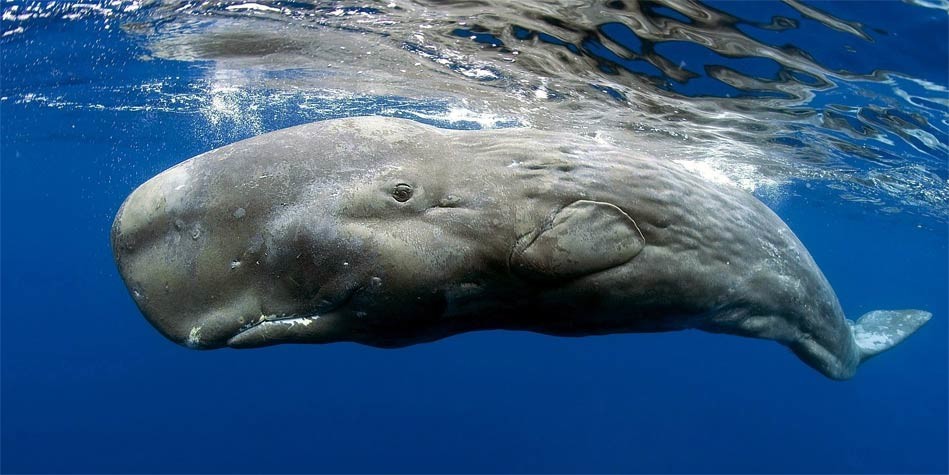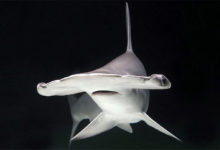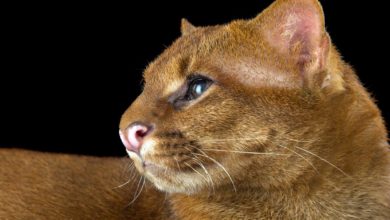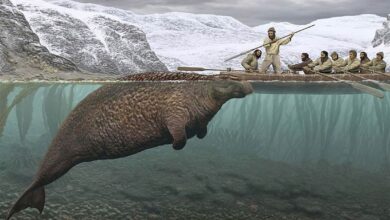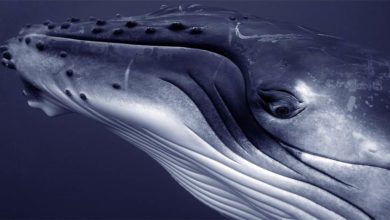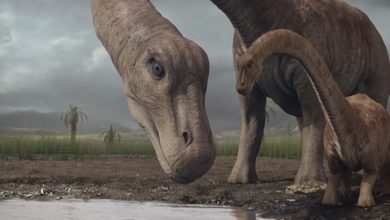Sperm whale, cachalot – the biggest predator of the world
Sperm whale (Physeter macrocephalus) – the largest of the toothed whales
Herman Melville, the author of Moby-Dick created a novel (based on true events), in which the main character, for which the work is titled, is a giant white sperm whale – the whalers’ object of desire. The book could as well be composed today, for presently the sperm whales are still the whalers’ ‘Holy Grail’.
Classification
- Class: Mammalia
- Order: Cetartiodactyla
- Infraorder: Cetacea
- Parvorder: Odontoceti
- Family: Physeteridae
- Genus: Physeter
- Species: Sperm whale (Physeter macrocephalus)
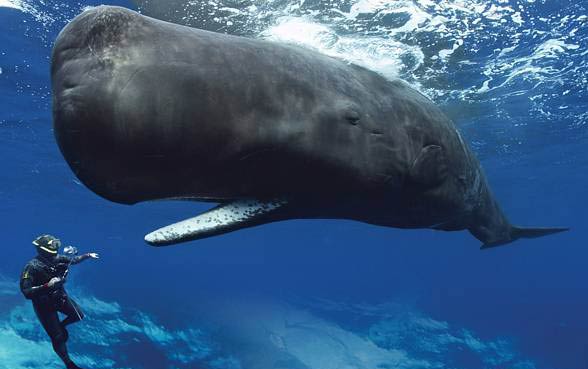
Areas of occurrence
The sperm whale is a cosmopolitan species – it inhabits every sea and ocean in the world. Females live in the tropical and temperate climate zones, whereas adult males may swim in colder waters. They are evidently present in the Mediterranean Sea, but cannot be observed in the Black Sea for the waters contains high amounts of sulfides (e.g. hydrogen sulfide) and lacks oxygen. Their presence in the Red Sea has not been confirmed. The largest populations inhabit the areas in close proximity to the continental shelves.
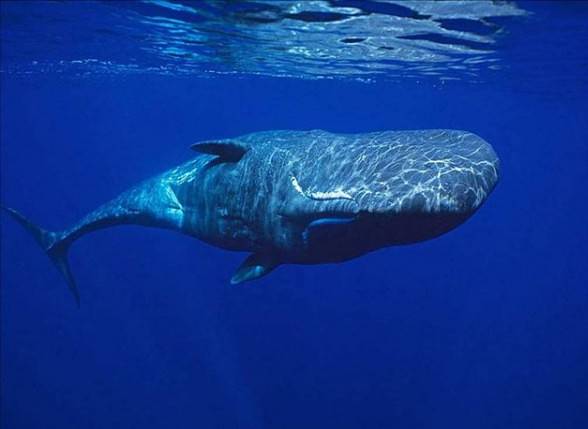
Characteristic
Appearance
The distinctive appearance of a sperm whale makes it unmistakable among other cetaceans, all of which thanks to its huge rectangular head, wide at the front and obtuse. An S-shaped blowhole is located in the front of its head, rather to the left of its mouth. It has a heart-shaped, extremely thick and wide tail fin. Sperm whale lifts its tail above the water when preparing to dive down seeking food. The bottom of the tail fin has many grooves. The pectoral fins are small in comparison with the body size. It has a low hump instead of a dorsal fin.
Cetaceans usually have a smooth, dark skin. However a sperm whale is an exception – it has an intensely wrinkled, grey- or dark graphite-colored skin, often compared to a prune. There is a record of white sperm whales (albinos).
Its jaw is long and narrow, equipped with 18 – 26 teeth. Every lower jaw large cone-shaped tooth perfectly fits in its place in the upper jaw. Nonetheless it has been proved that sperm whale copes with hunting for its most precious delight – squids – just fine, even without its teeth. Presumably male fighting is the more accurate reason for existence of such teeth. Older whales have numerous scars resembling sperm whales` bite marks. The age of a certain animal is easily established through teeth analysis, for alongside with the animal`s age, the number of dentin layers grows. This phenomenon is very similar to the tree-ring dating.
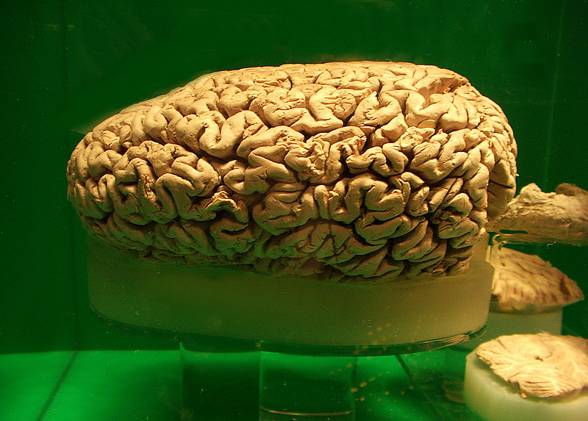
Large brain, (im)perfect senses
The sperm whale has the largest brain of all living animals. It can weigh 7.8 kg (17 lb) and have a volume of approximately 8000 cm3. Therefore the sperm whale`s brain is 5 times as heavy as a human`s brain. Although size of the brain does affect the level of intelligence (the encephalization quotient, EQ), sperm whales are less intelligent than dolphins.
Their olfactory system is meager, which also can be an evidence of the poor condition of not only their sense of smell but also taste. However the sperm whale`s deficit in that matter is compensated by an outstanding hearing system.
Spermaceti system
At the top of the whale`s skull there is a large set of organs filled with liquid substances, which congeals upon contact with atmosphere. This substance is called spermaceti. The most important task of this liquid and whole organ system that produces it is to generate powerful, concentrated sound signals used in echolocation and communication. The spermaceti-producing organ, melon, also regulates the whale`s buoyancy, as – due to changing the state of the liquid to solid and vice versa – it aids the sperm whale`s ability to dive.
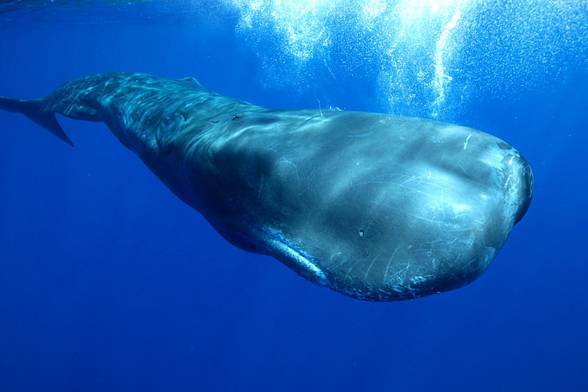
Vocalizations
While using the echolocation system, the sperm whale emits broadband sound signals in a certain direction exhaling the air through its phonic lips, located at the front of its nose, below the nasal blowhole. The sounds move backwards, along its nose through the melon. Most of the signal reflects at the frontal sac located on the whale`s skull, focusing the sound. Subsequently the sound passes through melon again, returning to the nasal area. The whole process is only a few milliseconds long.
Through the analysis of the emitted sound, researchers are able to estimate the size of the whale`s melon. Every whale has its own unique ‘tone’. It changes along with the adolescence of the sperm whale and, consequently, with the growth of the melon. The spermaceti-filled canal passes the sounds on to the inner ear. The air constantly bounces inside the whale`s head, so its sounds last as long as it is submerged. There are 4 kinds of sounds (clicks) : regular, screeching, ‘thumping’, rattling.
Sperm whale – the Earth`s loudest animal
Sperm whales can emit sounds with the intensity of 230 decibels (dB). As a result it is the loudest creature in the animal kingdom. To compare: a starting jet – 140 dB, while a nuclear blast – about 220 dB …
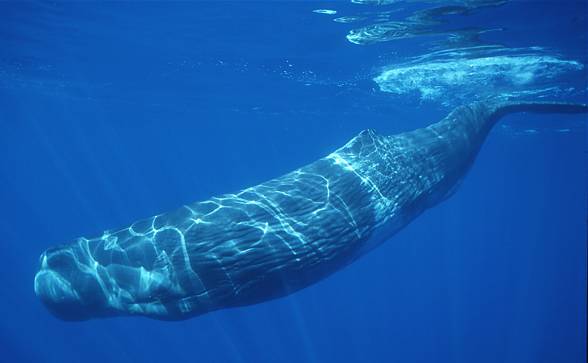
Diving
Apart from the Northern bottlenose whale (Hyperodon) and elephant seal (Mirounga), the sperm whale is the deepest diver of all marine mammals. It can go 3 km (9840 ft) deep and remain in the depths for up to 90 minutes. However usually it dives 400 meters (1300 ft ) deep and spends about 35 minutes underwater. This giant cetacean splendidly adapted to the drastic pressure changes during diving, thanks to its elastic chest, allowing the lungs to ‘collapse’, slowing down the metabolism and saving oxygen.
Between deep dives the sperm whale takes 8-minute breaks to hyperventilate above the water surface.

Diet
The sperm whale`s diving habit is related to its menu – it hunts for two species of squids: giant squid (Architeuthis dux) and colossal squid (Mesonychoteuthis hamiltoni). At the same time these are two largest mollusks in the world. Colossal squid can weigh up to 500 kg (1100 lb) and measure even 10 m (32 ft). The giant squid achieves 13 meters (42 ft) of length and 275 kg (606 lb) of weight.
Social behaviors, character
Sperm whales migrate and remain linked with the same groups over many years. It is extremely rare for other whales to join a fixed group, or for ‘old’ members to leave it. One group normally consists of 6 to 9 whales, although groups of over 20 whales can be observed. Related sperm whales do not copulate, as it often happens in case of killer whales. Females and the youth reserve 3/4 of their lives for hunting, spending the rest of their time on social interactions. Social ‘rituals’ usually take place in the afternoon.
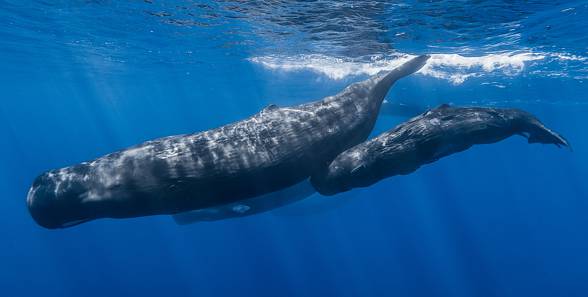
Sexual segregation
Adult males lead solitary lives, whereas females and their immature offspring live in groups. The main reason for the sexual segregation is rivalry for food – squids. The male whales leave a group they were born into between 4 and 21 years of age. They often create ‘bachelor cliques’ consisting of whales of a similar age and size. The older the male, the more willingly it lives solitarily.
Interspecies relations
Sperm whale has several enemies. Apart from humans, killer whales (Orcinus orca) and the false killer whales (Pseudorca crassidens) are their haunters. The most vulnerable attack target are the young sperm whales. Orcas do everything in order to separate the calf from its group. The group protects a young or wounded male, surrounding it with tails facing outwards. This is called a ‘marguerite formation’. The sperm whale`s tail fin becomes a lethal weapon. A single hit is all it takes to kill an orca. The group may also turn their heads outwards. It is uncertain if sperm whales keep friendly relations with other species, yet a common bottlenose dolphin with a spinal deformation has been seen incorporated into a sperm whales` group.
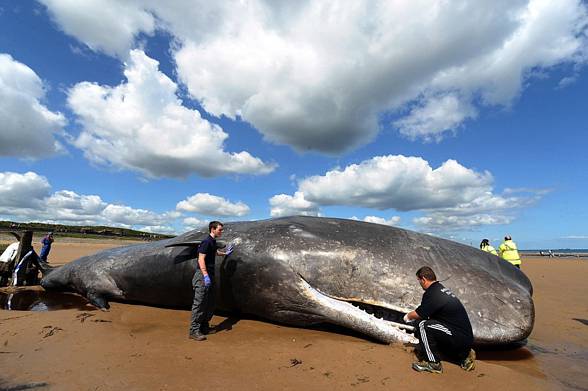
Breeding
The mating process is still a great unknown. There is evidence of a male hierarchy, but that does not confirm whether a female can choose a partner the way humpbacks do. After birth the males do not show interest in the calves.
Pregnancy last from 14 to 16 month, resulting in a birth of one calf. Females do not give birth every year, they can breed once every 4 – 20 years. Lactation lasts for 19 to 42 months, yet a calf can suck its mother until 13 years old. Males mature in 18 years of age, females – when 9. After reaching maturity, males migrate to the higher latitude areas, where the water is colder and the hunting more effective. Females remain inhabiting the lower latitudes. A male reaches is definitive size around 50 years of age.
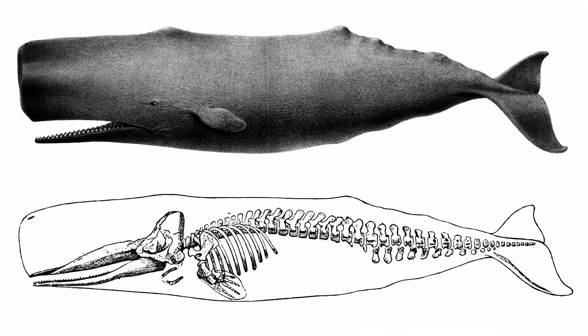
Detailed characteristics / size
Sperm whale, cachalot (Physeter macrocephalus)
- Length: males: 16 m (52 ft), longest recorded 20.5 m (67 ft); females: 11m (36 ft), longest recorded 13 m (42 ft); calves at birth – up to 4 m (13 ft)
- Weight: males: 41 tons (heaviest recorded 75 tons); females: 14 tons; calves at birth – around 1000 kg (2200 lb)
- Lifespan: up to 70 years
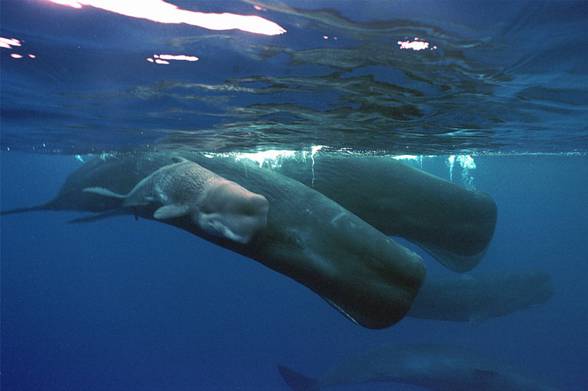
Sperm whale – interesting facts
- The sperm whale male is the largest toothed whale in the world.
- Similarly to other cetaceans, the sperm whale`s milk is very fatty (36%) and its consistency is comparable to cottage cheese, which makes it easily-consumable underwater.
- Calves can also suck the milk of females other than its mothers`
- It has been confirmed that sperm whales may suffer from decompression sickness, fast surfacing may prove lethal to them.
- Due to asymmetrical shape of their skull, the sperm whale uses echolocation very effectively for it receives signals slightly differently at both sides.
- Sperm whale has the longest intestines in the world.
- Melon may contain up to 1900 liters (502 US gal) of spermaceti.
- While diving really deep, sperm whales often tangle themselves in the telecommunication cables and drown.
- Sperm whales` sounds (clicks) are the most powerful sounds in the animal kingdom.
- The sperm whale`s tooth may reach a weight of 1 kg (2lb).
- Sperm whale is an endangered species (vulnerable according to the IUCN Red List conservation status).
- So called scrimshaws are created from sperm whales` teeth. During long journeys e.g. scenes from the whalers` life are carved into the teeth of hunted whales by mariners.
- Sperm whales excrete ambergris – a product of the whale`s digestive system, result of indigestion or constipation. This substance is widely used in the perfume industry. It resembles the smell of a horse sweat, with a ‘marine’ touch.


